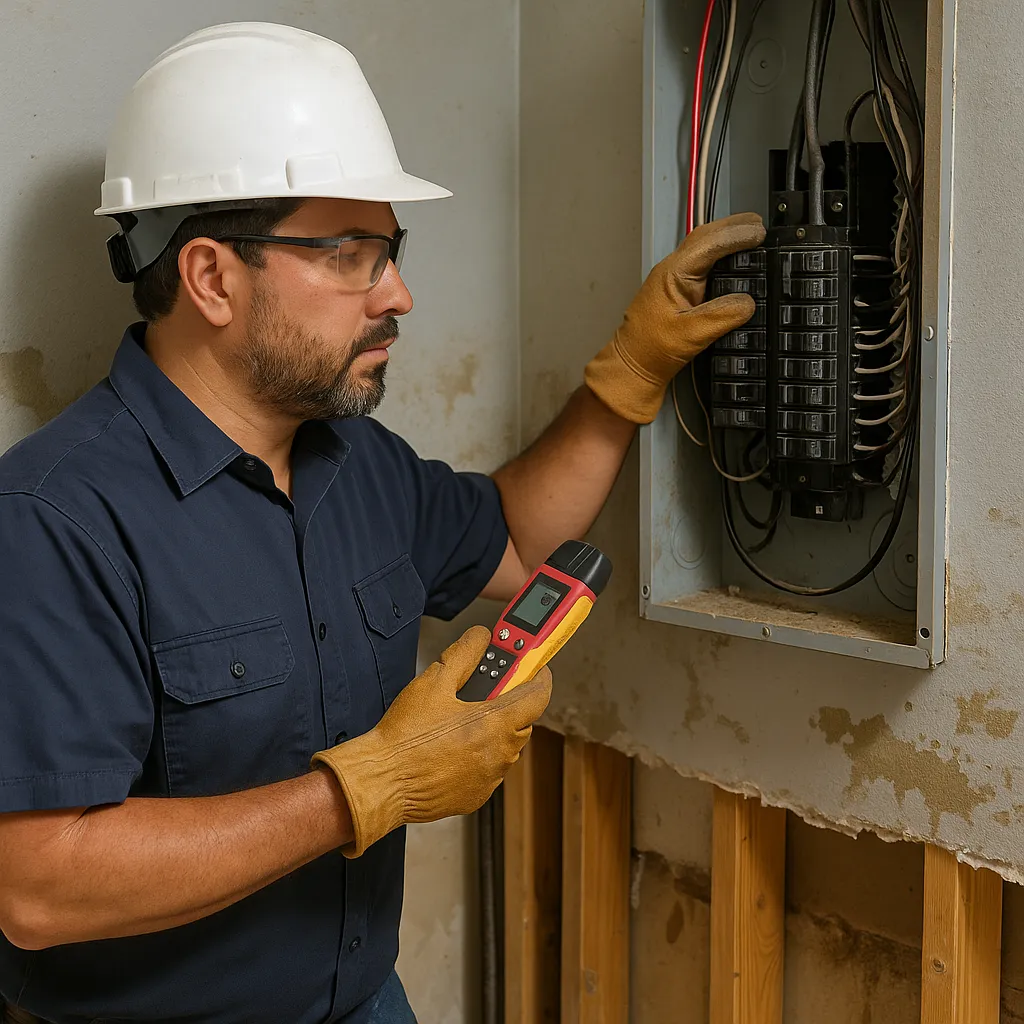
Post-Storm Electrical Inspections: What Sarasota Residents Need to Know
When a storm barrels through Sarasota, the primary concern is always safety—protecting your loved ones and minimizing property damage. But once the winds die down and the skies clear, another threat often lurks beneath the surface: electrical damage. Post-storm electrical inspections are an essential step in ensuring your home or business is safe, functional, and compliant with local codes. This guide will walk Sarasota residents through everything they need to know about post-storm electrical inspections.
Why Post-Storm Electrical Inspections Matter
Storms—especially those typical of Florida’s hurricane season—can cause a wide range of electrical issues, from downed power lines and water-damaged circuit breakers to hidden wiring hazards behind your walls. Just because the lights come back on doesn’t mean you’re in the clear.
Here’s why a post-storm electrical inspection is non-negotiable:
Hidden Dangers: Moisture intrusion, short circuits, and compromised wiring may not be immediately visible.
Preventing Fire Hazards: Electrical fires often result from undetected damage after storms.
Restoring Insurance Claims: Many insurance providers require documentation from licensed electricians.
Peace of Mind: Knowing your property is safe and up to code allows you to focus on recovery.
What Happens During a Post-Storm Electrical Inspection?
A licensed electrician performs a comprehensive examination of your electrical systems, looking for damage that could compromise safety or functionality. Here’s what you can typically expect:
1. Visual Assessment
Exterior Inspection: Your electrician will begin outside, checking the service mast, meter, and connection points for storm damage.
Interior Review: Inside your home, all panels, outlets, and major appliances will be checked.
2. Moisture Detection
Water and electricity do not mix. Moisture from flooding or wind-driven rain can get into outlets, wiring, or breaker panels, leading to corrosion or short circuits.
Thermal Imaging: Some professionals use infrared tools to detect temperature anomalies caused by electrical issues.
Moisture Meters: These measure humidity levels inside walls, near electrical fixtures, or in crawlspaces.
3. Electrical Panel Inspection
The breaker box is the heart of your home’s electrical system.
Check for Rust or Corrosion: Especially in flood-prone areas.
Testing for Functionality: Each breaker is tested to ensure it’s still operational.
Proper Labeling and Load Testing: Verifies circuits are correctly mapped and not overloaded.
4. GFCI and AFCI Outlet Testing
These specialized outlets protect against electrocution and fire.
GFCI (Ground Fault Circuit Interrupters): Required in kitchens, bathrooms, and outdoor areas.
AFCI (Arc Fault Circuit Interrupters): Installed in bedrooms and living areas to prevent arc faults.
5. Wiring and Conduit Inspection
Checking for Physical Damage: Wires can be frayed, chewed (by rodents seeking shelter), or otherwise compromised.
Assessing for Code Compliance: Any previous DIY wiring may also be flagged.
Common Electrical Problems After a Storm
Sarasota homes, especially those near the coast, are particularly vulnerable to storm-related damage. Some of the most common issues include:
Flooded Outlets and Switches
Downed Overhead Lines
Tripped Breakers and Non-Resetting GFCIs
Buzzing Sounds or Burning Smells
Inconsistent Power or Flickering Lights
Blown Transformers in the Area
Ignoring these signs can escalate into more serious problems, such as fire hazards, total power loss, or appliance failure.
When Should You Schedule an Inspection?
Immediately after power is restored—or sooner, if you experienced flooding. If any part of your home was submerged or moisture was present near electrical fixtures, do not delay.
Here’s a general post-storm inspection timeline:
TimeframeActionWithin 24–48 hoursVisual walk-through and emergency calls if issues are noticedWithin 72 hoursFull electrical inspection by a licensed electrician1 Week AfterDocumentation submitted for insurance claims, repairs initiatedOngoingMonitor for symptoms like flickering lights, tripping breakers